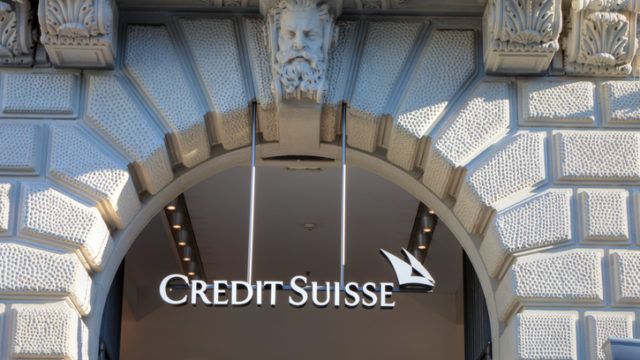If the Swiss regulatory authorities had hoped that the UBS takeover of Credit Suisse would mark a line in the sand on the evolving banking crisis, they were misguided. It has been another dismal session for banking shares, with UBS shares down 8.5% in the immediate aftermath of the deal, and the remainder of the banking sector sitting on significant losses.
The problems have not been confined to the banking sector. Shares in the asset management and insurance sectors have also tumbled, as fears over market volatility and a shift in the path of interest rates have weighed on investors. It has also been a difficult time for many of the other defensive sectors – energy, tobacco, infrastructure.
Once again, the markets’ obsession with the direction of interest rates is on full view. While the earnings for the asset management and insurance sectors may genuinely be at risk from sliding markets, elsewhere, the concern is simply that the problems in the banking sector will change central banks’ view on interest rates, disadvantaging ‘value’ areas and boosting growth areas.
It is notable that the five-day winners on markets are interactive media & services, software, semi-conductors and hardware. The S&P 500 was actually up on the week concluding March 17, due to its high weighting in technology.
Anthony Willis, investment manager in the Columbia Threadneedle Multi-Manager team, says: “Financial markets, having been expecting continued rate hikes from the Fed suddenly shifted from pricing a 25 or even a 50 basis point hike from the Fed on March 22 and further hikes over the year to expecting no hike at all next week and then at least three rate cuts before year end.”
This created significantly volatility in the short-dated bond market. Willis points out that on Monday March 13, the US 2-year bond saw its yield, which moves inversely to price, fall by 61 basis points – the biggest single day move since 1982.
He adds: “To give some context on the shifting expectations on rates, when Fed chair Jay Powell finished his testimony to Congress last week, Fed Funds futures were pricing 48 basis points of hikes and a terminal (peak) rate of 5.6%. By Monday evening, markets were pricing no hikes at the Fed March meeting, a peak rate of 4.72% and rates ending the year back at 4%.”
There is some logic to the view that central banks could change position. They have historically come to the rescue of the global economy at times of tension. As Oxford Economics points out: “The (Federal Reserve) was clearly active to quell the storm, extending more than $300 billion of financial support to prop up the beleaguered banks.” This suggests it is willing to intervene to shore up market stability.
However, the BlackRock Investment Institute was sceptical that the current crisis would prompt a change of heart from central banks: “We think that’s misguided and expect major central banks to keep hiking rates in their meetings in coming days to try to rein in persistent inflation.”
After all, the threat from inflation has not receded. Oxford Economics points to the most recent consumer price report, which came in hotter than expected. Labour markets continue to show no signs of weakness, with the most recent jobs data showing the US economy adding 311,000 jobs, versus 220,000 expected. There are signs of weakness in areas such as retail sales, industrial production, and producer prices, but not enough to indicate a substantive change of direction on interest rates.
The European Central Bank showed it would not be swayed by recent market turmoil with a 50bps rise last week. “The elevated level of uncertainty reinforces the importance of a data-dependent approach to the Governing Council’s policy rate decisions, which will be determined by its assessment of the inflation outlook,” it said as it announced the rate rise.
That said, the trade-off for central banks – between fighting inflation and protecting both economic activity and financial stability – is now clear and immediate, says BlackRock.
It adds: “The recent market and bank convulsions represent a tightening of financial conditions and should curb bank lending, helping do some of the tightening work for central banks. This could result in policy rates peaking at lower levels than they otherwise would have.” This would imply the market is at least partially right that the current trouble could avoid the need for significant rate rises.
Oxford Economics agrees, saying the financial turmoil almost certainly removes the possibility of a 50bps hike at the next Federal Reserve meeting, but it still expects a 25bps rise: “Not only would the steeper increase induce more financial instability, but recent economic data indicate that the rate hiking campaign over the past year may be biting deeper than expected a few weeks ago.”
There is a broader question on whether the market will ever be persuaded to curb its overwhelming focus on interest rates. There had been hopes that a more stable and predictable environment for interest rates might bring greater focus on the merits of individual companies. That appeared to be starting to happen, but in this crisis, it has once again been central banks calling the shots.
The outcome for the banking sector remains uncertain: there are still risks across US regional banks, and there is a sense that the extent of Credit Suisse’s problems is not yet fully understood by the market. However, the movements in the remainder of the market may simply be a function of the general volatility around interest rate expectations. If there are opportunities, they may be found among good value stocks that are caught up in monetary policy speculation.
This story first appeared on our sister publication, Portfolio Adviser.

















